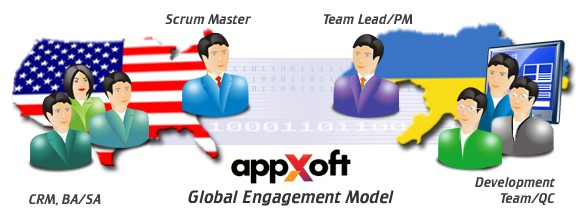Hybrid Business Relationship Management
Post on: 16 Март, 2015 No Comment

Hybrid Business Relationship Management
Scope of Hybrid Business Relationships
State-of-the-Art Business Relationship Management (BRM) is dedicated to specific targets, actors, entities or players. The respective focus of relationships is captured in models of Customer Relationship Management (CRM), Supplier Relationship Management (SRM), Investor Relationship Management (IRM), Complementor Relationship Management (CoRM) and even Competitor Relationship Management (CompRM). Advanced BRM-approaches take account of the fact that an increasing number of players play more than just one single role. In addition to social and psychological instances (e.g. split personality) there is a plethora of examples for simultaneous or sequential mixed role playing in business. such as
- Suppliers providing both goods and services (e.g. BO-models)
- Offender & co-operator (e.g. whistle blowers)
- Entering financial markets both as buyer and seller
- Follower & leader in participative leadership models
- Principal & agent (as a consequence of incentive systems to reduce agency costs) as well as

- Mixed stakeholdership, i.e. manager-shareholders (in the wake of partnership models, MBOs or stock option plans) or employee-shareholders.
Quite a number of these mixes combine rather diverse roles which appear contradictory and their blending at least paradoxical. Because of this significant diversity these role configurations are called “hybrid”. Hybrid role playing is quite prevalent within complex value adding systems beyond the supply chain, such as two-sided markets, business ecosystems, or the value net. This complex model of value adding systems contains the roles of customers, suppliers, competitors and complementors of a company that serves as a reference unit. The value net covers the following typical hybrid roles:
- Produsers: Customers (“users”) who also provide (as “producers” or suppliers) input into the value adding process. This hybrid role characterizes co-production or co-creation as well as the (co-generating) players in open source projects.
- Coopetitors: players that combine completion (as complementors) with competition (as competitors), e.g. M. Porter’s “good competitors”.
- Pro-Complementors: Sources like tire or battery companies in the automotive industry who act as suppliers (Pro-viders) of carmakers in the market and as complementors (supplementors) in the aftermarket.
- Customer-Affiliates, i.e. customers in e-commerce who also act as intermediaries by running a website that supports distribution activities of companies.
- Customer-Competitors: Non captive power train-business units or subsidiaries of carmakers that have other carmakers as customers who are competitors to their parent company.
- Coopetitor-Produsers: In addition to the scope of dual hybrid roles there are also triple (or even more complex) samples of hybrid roles.
Blending is not based on simple combinatorial “anything is possible”-reasoning. For instance, the blending (merging) of the roles of involved parties (e.g. suppliers) and third parties (e.g. arbiters) is prohibited.
The hybridity of Produsers, Coopetitors, Pro-Complementors & Co. is not entirely captured just by some “mixed labeling”. So with Pro-Complementors, behind the mix of supplier (provider) and complementor (supplementor) we find the combination of antagonistic ways of running a business, i.e. as a contractor (supplier) earning an assured contract income versus as an entrepreneur (supplementor) earning an uncertain residual income. Moreover, hybridity is not only a matter of diversity, but also of blending patterns and proportions : simultaneous blending of competition and cooperation is more challenging than sequential blending (e.g. in a precompetitive cooperation mode). Likewise, balanced proportions of competition and cooperation are more difficult to handle than blends with a dominant default relationship (e.g. cooperation) and competition (e.g. tendering or bidding models) as an exception.
Managing Hybrid Business Relationships
Hybrid roles of business partners require more complex approaches to business relationship management than the ones existing CRM, SRM, CoRM or CompRM-models can furnish. Not even advanced models of mixed relationship management are capable of meeting the challenges of hybrid roles: Take configurations of SRM and CRM as building blocks of Supply Chain Management or of CRM and CoRM with a supporting linkage between the two (Complemented CRM ), i.e. CoRM supporting CRM by creating customer value based not only on an isolated product but on complementary configurations of products and services provided by independent vendors. Across the board the respective variants of BRM within these mixed approaches focus different targets whereas hybrid BRM deals with the same target.
Against this background, managing hybrid business relationships must rely on two building blocks: The first ingredient is generic BRM that ignores specific roles, such as friend or foe. Relevant components of generic BRM are relationship infrastructures (e.g. interorganisational information systems, relationship intelligence, compliance, rules and so called xRM-platforms, i.e. Anything Relationship Management platforms. Whenever the roles played by business partners can be specified, either by the domain of the relationship (market segment, regions, etc.) or by the life cycle episode, dedicated modes of CRM, SRM, CompRM & Co. should be applied (as the second building block). The net life cycle value of a hybrid business relationship is calculated by aggregating the benefits and costs of both components.
Britsch, J. Schacht, S. und Mädche, A. (2012), Anything Relationship Management, in: Wirtschaftsinformatik, 54, 2012, 2, S. 83-85
Reiss, M. Change Management: A Balanced and Blended Approach, Norderstedt 2012
Reiss, M. Hybridorganisation, Stuttgart 2013
The Author: Prof. Michael Reiss, Chair of Organizational Design and Behaviour. University of Stuttgart.
Click to see his Publications .














